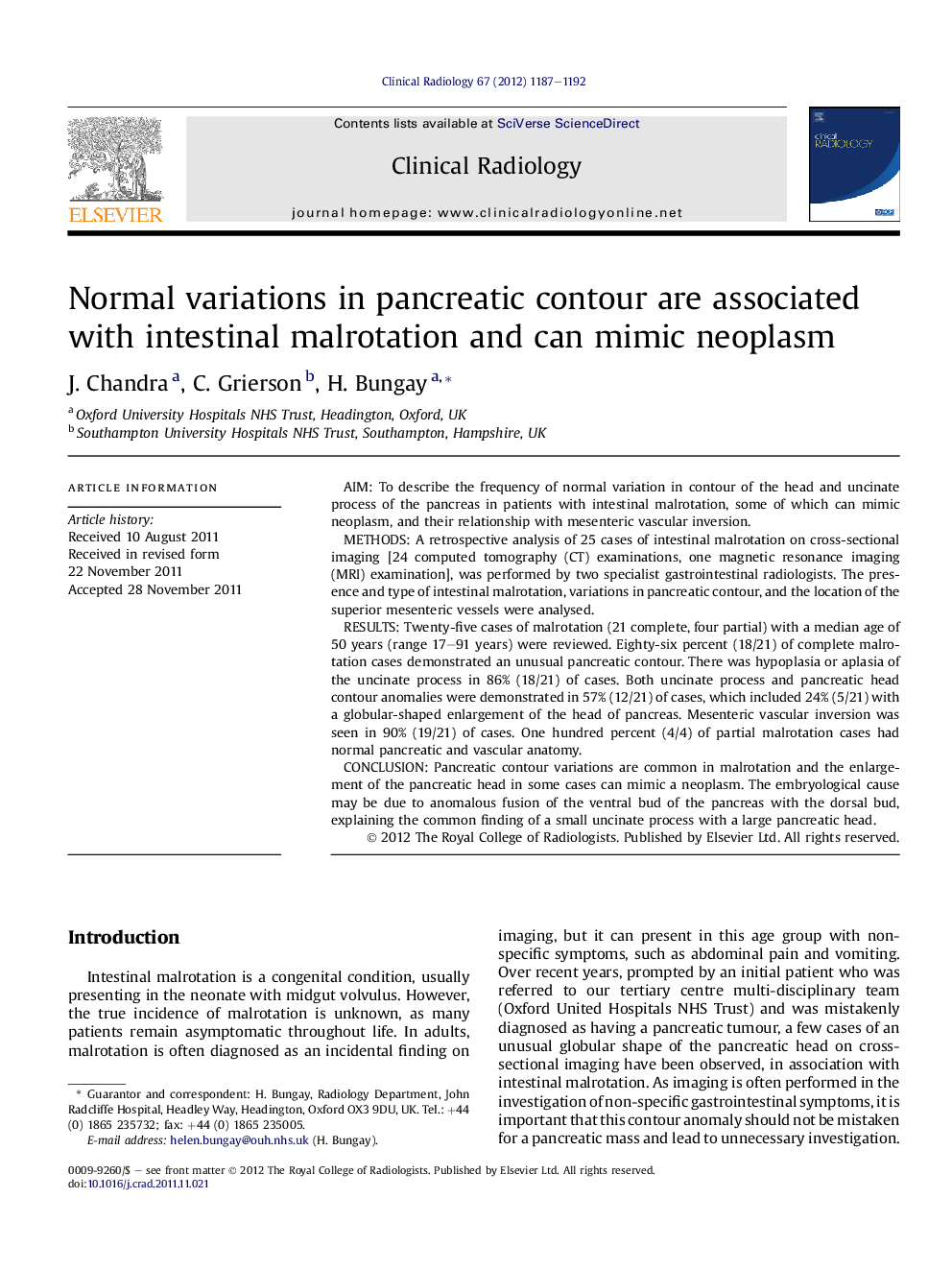| Article ID | Journal | Published Year | Pages | File Type |
|---|---|---|---|---|
| 3982871 | Clinical Radiology | 2012 | 6 Pages |
AimTo describe the frequency of normal variation in contour of the head and uncinate process of the pancreas in patients with intestinal malrotation, some of which can mimic neoplasm, and their relationship with mesenteric vascular inversion.MethodsA retrospective analysis of 25 cases of intestinal malrotation on cross-sectional imaging [24 computed tomography (CT) examinations, one magnetic resonance imaging (MRI) examination], was performed by two specialist gastrointestinal radiologists. The presence and type of intestinal malrotation, variations in pancreatic contour, and the location of the superior mesenteric vessels were analysed.ResultsTwenty-five cases of malrotation (21 complete, four partial) with a median age of 50 years (range 17–91 years) were reviewed. Eighty-six percent (18/21) of complete malrotation cases demonstrated an unusual pancreatic contour. There was hypoplasia or aplasia of the uncinate process in 86% (18/21) of cases. Both uncinate process and pancreatic head contour anomalies were demonstrated in 57% (12/21) of cases, which included 24% (5/21) with a globular-shaped enlargement of the head of pancreas. Mesenteric vascular inversion was seen in 90% (19/21) of cases. One hundred percent (4/4) of partial malrotation cases had normal pancreatic and vascular anatomy.ConclusionPancreatic contour variations are common in malrotation and the enlargement of the pancreatic head in some cases can mimic a neoplasm. The embryological cause may be due to anomalous fusion of the ventral bud of the pancreas with the dorsal bud, explaining the common finding of a small uncinate process with a large pancreatic head.
